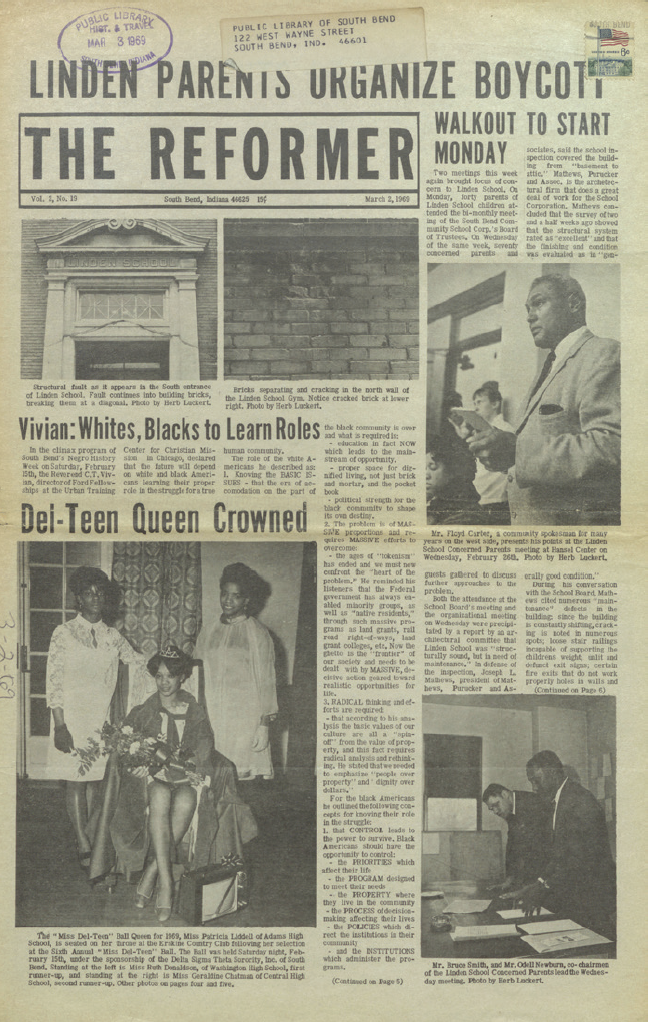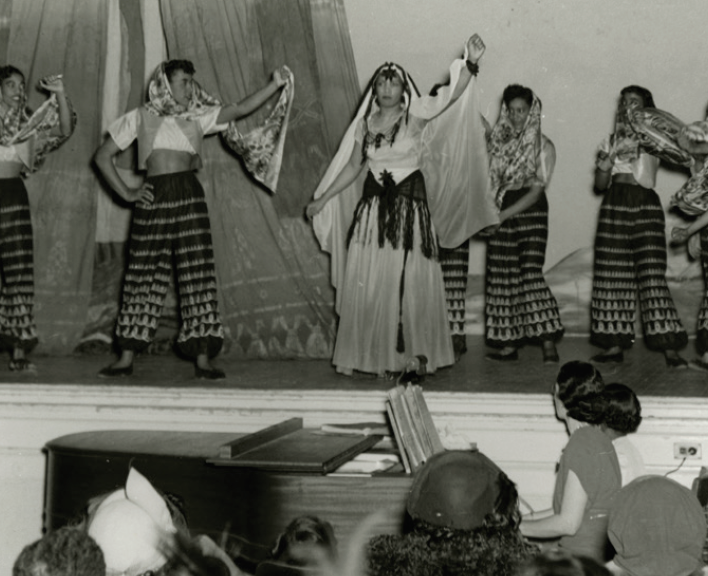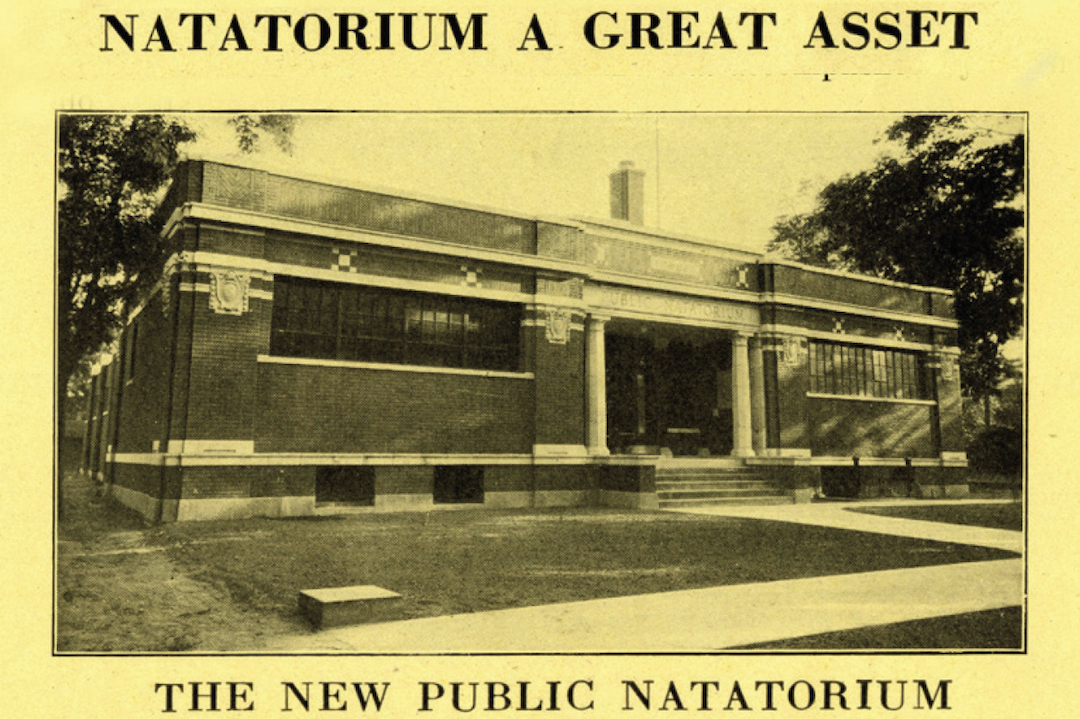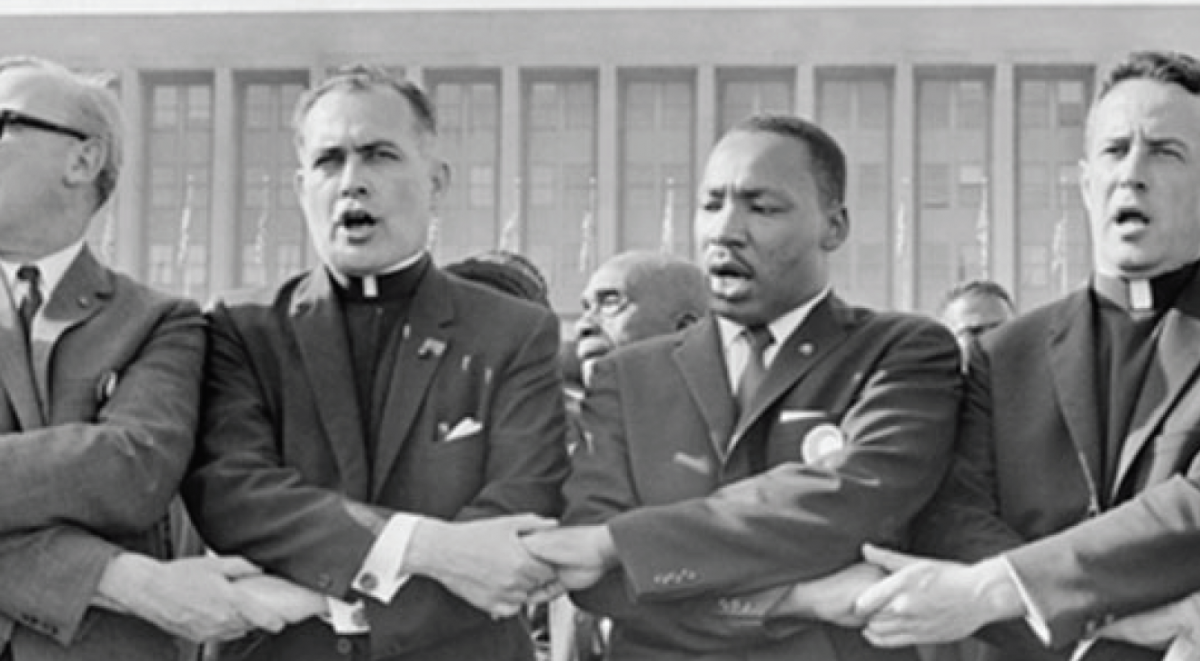by Joseph Sipocz, River Park Branch Manager
Rosa Parks, the Greensboro Four, and the March on Washington are a few of the key people and events that ignited the spark that became the Civil Rights Movement. Throughout the 1940s, ’50s, and ’60s, black Americans fought to end racial discrimination in cities and towns across the United States. The events that unfolded on the national stage were mirrored in struggles occurring locally in South Bend.
During the Civil Rights Movement, the African American community in South Bend confronted segregation in its neighborhoods, schools, and other public places. Local leaders, like James Herring, J. Chester Allen, and Georgia Ward Bryant, raised their voices against these injustices.
Fair Housing
It was common in the 1950s for neighborhoods to be made up of families from one country in Europe, and there was little racial diversity. The real estate industry actively worked to keep neighborhoods segregated through the practice of redlining, which prevented African Americans from purchasing homes in neighborhoods occupied by white families.
In 1963 the Fair Housing Committee of South Bend–Mishawaka conducted a hearing to document this practice. Dale Grayson and Notre Dame Law School Professors Thomas Broden and Conrad Kellenberg conducted the hearing. Eighteen residents, white and black, testified about their experiences.
James B. Herring reported being denied a home in part because the realtor said his children wouldn’t have anybody to play with. In an oral history housed in Michiana Memory, Dr. Roland Chamblee stated that Professor Kellerman purchased the house he wanted so he would have someone willing to sell it to him. Winona Egedoerfer was willing to sell her home on a non-discriminatory basis until neighbors threw bricks through her windows, beat up her son, and then offered to buy it themselves.
The testimony concluded that “a Negro can purchase any home his heart desires and his pocketbook can afford, provided a Negro family is already living on the block. As additional areas that are previously all-white begin to deteriorate, such areas will usually become open to Negro occupancy. These are the only areas, generally speaking, in which Negroes can live.”
As early as 1950, community members fought against this pervasive housing discrimination. African American workers at Studebaker formed Better Homes of South Bend, a co-op that purchased land outside traditionally black neighborhoods. Within 5 years, they had financed and built 22 homes in northeast South Bend.
To learn more, check out Gabrielle Robinson’s book Better Homes of South Bend.

School Desegregation
The South Bend Community School Corporation has been working toward desegregation for a long time. Many School Board actions in the late 1960’s and ’70’s were intended to accomplish this goal.
Ground zero was Linden School on the city’s west side. In 1966 a ceiling in the school caved in on students, which highlighted the disparity between schools in different neighborhoods. A suit brought by the NAACP in 1967 brought the first round of changes to the school system.
By the late 1970’s, most of the schools in the Corporation were at least partially integrated, but many elementary schools were still racially unbalanced. In 1981 the federal government filed a lawsuit against the SBCSC, which led to the consent decree under which the schools still operate.

Premier of Ouanga
The H.T. Burleigh Music Association was an African American theater group active in South Bend from the 1930s to the 1950s. Josephine Curtis, Georgia Ward Bryant, and James Lewis Casaday led the organization and maintained its high level of quality and professionalism.
African American composer Clarence Cameron White had difficulty finding a troupe willing to premier a full production of Ouanga, his opera in three acts. The work was completed in 1932, but White had only been able to stage concert performances. He met White’s long time acquaintance, Josephine Curtis, who he had met while they were part of the African American musical community in St. Louis, she offered the services of the H. T. Burleigh Music Association to stage the opera in South Bend.
The world premier of Ouanga was presented at Central High School auditorium on June 10 and 11, 1949. The story focused on the revolution that lead to Haitian independence. Most of the cast drew from the local Burleigh Music Association, while some leads were professional performers. The Haitian ambassador flew into town to attend the premier. The South Bend Tribune praised the production, but noted that its difficult score was “unkind to singers.” Still, it said that the local and professional cast was up to the demands of the score.

Engman Natatorium
The Engman Natatorium opened in 1922. African Americans were intitially excluded, but, in 1936 they were assigned a day of the week to use the pool. The Natatorium was finally desegregated in 1950 due to the efforts of lawyers J. Chester Allen and Maurice Tulchinsky, and the leadership of the local NAACP.
The pool ceased operation by 1978, but reopened as the IU South Bend Civil Rights Heritage Center in 2010. At the opening celebration, Barbara (Vance) Brandy spoke of the rejection she felt when she had been turned away as a youth but stated that the new center represented “moving from hurt to hope”.

Joined Hands
Father Theodore Hesburgh arranged for the Reverend Martin Luther King Jr., acting as president of the Southern Christian Leadership Conference, to speak to more than 3000 people at Notre Dame’s Stepan Center on October 18, 1963. In his speech he told the crowd: “Science and technology have made today’s world a neighborhood. We must make it a brotherhood.”
The statue of Martin Luther King Jr. and Father Hesburgh standing with linked arms in downtown South Bend comes from a photograph taken at a rally at Soldier Field in Chicago on June 21, 1964. Together they were singing “We Shall Overcome”.
These resources and more live in the Civil Rights & African American History collection of Michiana Memory. To discover more, visit michianamemory.sjcpl.org